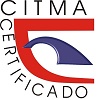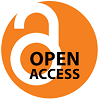Propuesta metodológica mediante la simulación con Scilab de circuitos estimulados con ondas periódicas no sinusoidales
Methodological proposal through the simulation with Scilab of circuits stimulated with non-sinusoidal periodic waves
Palabras clave:
Simulación, Circuitos eléctricos, Metodología, Proceso de enseñanza – aprendizaje, ScilabResumen
Actualmente la carrera de Ingeniería Eléctrica de la Universidad Tecnológica de La Habana “José Antonio Echeverría”, CUJAE está inmersa en su perfeccionamiento curricular en la que el empleo de las tecnologías de la información y las comunicaciones, resulta de vital importancia para desarrollar habilidades en los estudiantes y en la comprensión de los contenidos. Por su parte, las asignaturas de Circuitos Eléctricos constituyen la base fundamental para la formación de los ingenieros electricistas, dentro de los contenidos a tratar en las asignaturas de circuitos se encuentran las ondas periódicas no sinusoidales aspecto importante para el ingeniero en formación ya que, en la práctica, las condiciones nunca son ideales, estas formas de onda se encuentran frecuentemente muy deformadas. El objetivo del trabajo es proponer una metodología analítica y mediante la simulación con el software Scilab para la resolución de circuitos eléctricos sencillos estimulados con ondas periódicas no sinusoidales que ayude a mejorar el proceso de enseñanza – aprendizaje de las asignaturas de circuitos eléctricos para los estudiantes de 2do año. Durante la investigación y diseño de la propuesta. Se emplearon el método analítico – sintético, inductivo – deductivo y la sistematización. Como resultado principal se reconoce la utilidad de la simulación como método para mejorar el autoaprendizaje de los estudiantes y el trabajo del profesor como orientador y guía mediante la interactividad, además de con la propuesta se verifican los contenidos teóricos con los prácticos posibilitando a los estudiantes el autoaprendizaje, el aprendizaje colaborativo y la autoevaluación.
Abstract:
Currently, the Electrical Engineering career of the Technological University of Havana "José Antonio Echeverría", CUJAE is immersed in its curricular improvement in which the use of information and communication technologies is of vital importance to develop skills in students. and understanding of the content. On the other hand, the subjects of Electrical Circuits constitute the fundamental basis for the training of electrical engineers, within the contents to be treated in the subjects of circuits are non-sinusoidal periodic waves, an important aspect for the engineer in training since, in practice, conditions are never ideal, and these waveforms are often highly distorted. The objective of the work is to propose an analytical methodology and by means of the simulation with the Scilab software for the resolution of simple electric circuits stimulated with non-sinusoidal periodic waves that helps to improve the teaching - learning process of the subjects of electric circuits for the students of 2nd year. During the research and design of the proposal, analytical methods were used - synthetic, inductive - deductive and systematization. As a main result, the usefulness of simulation is recognized as a method to improve students' self-learning and the teacher's work as a counselor and guide through interactivity, in addition to the proposal, the theoretical contents are verified with the practical ones, enabling students to self-learning, collaborative learning and self-assessment.
Keywords: Electrical circuits, Simulation, Methodology, Teaching-learning process, Scilab
Descargas
Citas
Cabero , A., Gutiérrez , C., Barroso , O., & Palacios, R. (2022). Desarrollando competencias digitales y emprendedoras en Pedagogía. Grado de aceptación de una propuesta formativa. Revista Interuniversitaria de Investigación en Tecnología Educativa, No. 2, ISSN: 2529-9638. Recuperado el 2022, de https://doi.org/10.6018/riite.522441
Colón, A. T., Lazo, L. T., & Cabocolo, P. B. (2018). Conjunto de prácticas de laboratorio de electrónica analógica y digital. VI Simposio Internacional de Electrónica: Diseño, Aplicaciones, Técnicas Avanzadas y Retos Actuales. Recuperado el 2020, de
https://www.google.com/url?sa=t&rct=j&q=&esrc=s&source=web&cd=&cad=rja&uact=8&ved=2ahUKEwit oPrmsb7qAhVLnOAKHduVAMkQFjABegQIChAB&url=http%3A%2F%2Fwww.informaticahabana.cu%2F es%2Fnode%2F4381&usg=AOvVaw02lcsV695MWG48YU3Z_BAl
García , M., Diaz , d., & Coloma , R. (2021). Estrategia para la integración de las Tecnologías de la Información y las Comunicaciones en la formación inicial de docentes. Revista EduSol, Vol. 21, No. 75. ISSN: 1729-8091. Recuperado el 2022, de https://www.redalyc.org/articulo.oa?id=475768571008
Lázaro, M., Rodríguez, J. B., & Olivas, G. G. (2018). Laboratorio virtual para la interpretación de las cargas en vuelo.
Modelling in Science Education and Learning , 11(2). doi: https://doi.org/10.4995/msel.2018.9302
López, C., & Pérez, M. (2020). Empleo del simulador Edison como herramienta didáctica para el aprendizaje de los circuitos eléctricos. Obtenido de Tecnología Educativa. Vol. 5, No. 1, ISSN: 2519-9436:
https://tecedu.uho.edu.cu/index.php/tecedu/article/view/205
Muñoz , C., Aravena , M., & Cuello , R. (2022). Flujo de la comunicación y proceso de aprendizaje en docencia online. Revista Faro. Vol. 1, No. 35. e-ISSN 0718-4018. Recuperado el 2022, de
http://www.revistafaro.cl/index.php/Faro/article/view/668
Páez, F., & Tavares , B. (2022). Proceso de enseñanza aprendizaje en entornos virtuales en la formación docente inicial del instituto de formación docente de Coronel Oviedo, Revista Ciencia Latina Revista Científica Multidisciplinar, Vol. 6, No. 3, ISSN 2707-2215. Recuperado el 2022, de https://doi.org/10.37811/cl_rcm.v6i3.2498
Pérez, M., López , C., & Ramos , G. (2021.a). Potencialidades del Software Scilab en el proceso de enseñanza - aprendizaje de las asignaturas de circuitos eléctricos. Revista Tecnología Educativa, Vol. 6, No. 1, ISSN: 2519-9436. Recuperado el 2022, de
https://www.researchgate.net/publication/353273433_POTENCIALIDADES_DEL_SOFTWARE_SCILAB_ EN_EL_PROCESO_DE_ENSENANZA_- APRENDIZAJE_DE_LA_ASIGNATURA_DE_CIRCUITOS_ELECTRICOS
Pérez, M., Ramos, G., Rodríguez , D., Canasí , P., Díaz, A., & García , d. (2021.c). Estudio por medio de Scilab de los armónicos en los Sistemas Eléctricos de Potencia aplicado a un caso de estudio. ISBN: 978-959-216-605-9. Recuperado el 2022, de
https://www.researchgate.net/publication/355089435_Estudio_por_medio_de_Scilab_de_los_armonicos_en_l os_Sistemas_Electricos_de_Potencia_aplicado_a_un_caso_de_estudio
Pérez , M., Ramos , G., Freire, R., & Barrios , G. (2022.a). Desarrollo de aplicaciones en el software Scilab para el análisis de armónicos en sistemas industriales. Ingeniería Energética, Vol. 43, No.1, ISSN 1815-5901. Recuperado el 2022, de
https://www.researchgate.net/publication/359069456_Development_of_applications_in_Scilab_software_for_ the_analysis_of_harmonics_in_industrial_systems
Pérez , M., Ramos , G., Rodríguez , V., Santos , B., & López , C. (2022.b). La simulación como método para mejorar el proceso de enseñanza-aprendizaje de los circuitos eléctricos. Revista Referencia Pedagógica, Vol. 10, Número Especial, ISSN: 2308-3042. Recuperado el 2022, de
https://www.researchgate.net/publication/361228688_Simulation_as_a_method_to_improve_the_teaching- learning_process_of_electrical_circuits
Pérez, M., Ramos , G., & Santos , B. (2022.c). Integración de las tecnologías en las asignaturas de Circuitos Eléctricos. Revista Pedagogía Profesional, Vol. 20, No.1, ISSN 1684-5765. Recuperado el 2022, de https://www.researchgate.net/publication/360407777_Integracion_de_las_tecnologias_en_las_asignaturas_de
_Circuitos_Electricos
Remolina, C. (2013). La dinámica de integración de las TIC al sistema educativo colombiano. Portal Educativo de las Américas . Recuperado el https://recursos.educoas.org/publicaciones/la-din-mica-de-integraci-n-de-las-tic- al-sistema-educativo-colombiano de 2022
Roldán-Blay, C. & Pérez-Sánchez, M. (2017). Laboratorio Virtual como Herramienta para Comprender el Funcionamiento de las Líneas de Alta Tensión. Modelling in Science Education and Learning , 10(2). doi: https://doi.org/10.4995/msel.2017.5902
Santos , B., & Armas , V. (2020). La integración de las tecnologías de la información y la comunicación en los procesos. Universidad 2020 12do Congreso Internacional de Educación Superior. ISBN: 978-959-16-4395-7. Recuperado el 2022, de
https://www.researchgate.net/publication/341757289_LA_INTEGRACION_DE_LAS_TECNOLOGIAS_DE
_LA_INFORMACION_Y_LA_COMUNICACION_EN_LOS_PROCESOS_FORMATIVOS_UNIVERSITA RIOS
Zambrano , G., & Intriago, M. (2022). Los entornos virtuales como recursos didácticos en el proceso de enseñanza aprendizaje del nivel de estudios básico superior. Revista Dominio de las Ciencias, Vol. 8, No. 3. ISSN: 2477- 8818. Recuperado el 2022, de http://dx.doi.org/10.23857/dc.v8i3
Publicado
Cómo citar
Número
Sección
Licencia
Derechos de autor 2023 Maykop Pérez Martínez , Josnier Ramos Guardarrama , Janette Santos Baranda

Esta obra está bajo una licencia internacional Creative Commons Atribución 4.0.
Horizonte Pedagógico es una revista Open Access, lo que quiere decir que todo su contenido es accesible libremente sin cargo para el lector o su institución. Los usuarios están autorizados a leer, descargar, copiar, distribuir, imprimir, buscar o enlazar a los textos completos de los artículos de esta revista sin permiso previo del editor o del autor, de acuerdo con la definición BOAI de open access. Los autores que publican en esta revista están de acuerdo con los siguientes términos: Los autores conservarán los “Derechos de autor” y garantizan a la revista el derecho de ser la primera publicación del trabajo. La revista se encuentra protegida bajo una licencia internacional de Creative Commons Attribution License Atribución 4.0 Internacional (CC BY NC 4.0), que permite a otros compartir (copiar y redistribuir el material en cualquier medio o formato) y adaptar (remezclar, transformar y construir a partir del material), para cualquier propósito, incluso comercialmente. Bajo las siguientes condiciones: atribución (usted debe dar crédito de manera adecuada, brindar un enlace a la licencia, e indicar si se han realizado cambios y no comercial — Usted no puede hacer uso del material con propósitos comerciales. Puede hacerlo en cualquier forma razonable, pero no de forma tal que sugiera que usted o su uso tienen el apoyo de la revista o el autor de la publicación.






















